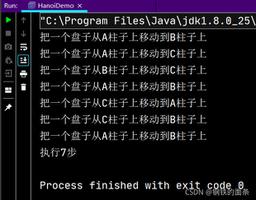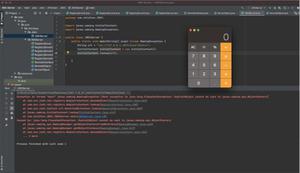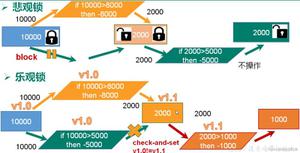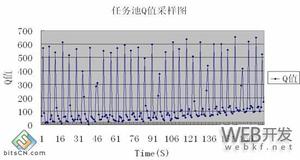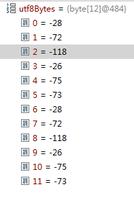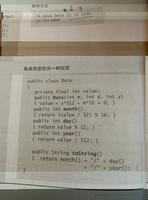java 重写的 几大注意点

Single Dispatch
class Parent { void print(String a) { log.info("Parent - String"); }
void print(Object a) { log.info("Parent - Object"); }
}
class Child extends Parent {
void print(String a) { log.info("Child - String"); }
void print(Object a) { log.info("Child - Object"); }
}
String string = "";Object stringObject = string;
// What gets printed?
Child child = new Child();
child.print(string);
child.print(stringObject);
Parent parent = new Child();
parent.print(string);
parent.print(stringObject);
child.print(string); // Prints: "Child - String"child.print(stringObject); // Prints: "Child - Object"
parent.print(string); // Prints: "Child - String"
parent.print(stringObject); // Prints: "Child - Object"
被调用的方法取决于“实际”实例类型,而不是“声明的”实例类型。
Java 不支持双调度,因此,在处理方法参数时,重要的是参数的“声明”类型,而不是其“实际”类型。
双调度是根据接收器和参数类型选择在运行时调用的方法的过程的技术术语。(可以使用访问者模式达到一样的效果)
Hidden Override
class Parent { void print(Object a) { log.info("Parent - Object"); }
}
class Child extends Parent {
void print(String a) { log.info("Child - String"); }
}
String string = "";Parent parent = new Child();
parent.print(string);
parent.print(string); // Prints: "Parent - Object"
在检查子类覆盖之前,Java 首先会选择要调用的方法。 在这种情况下,声明的实例类型是
Parent,Parent中唯一匹配的方法是Parent :: print(Object)。 当Java然后检查Parent :: print(Object)的任何潜在覆盖时,它找不到任何覆盖,因此这是执行的方法。
Exposed Override
class Parent { void print(Object a) { log.info("Parent - Object!"); }
void print(String a) { throw new RuntimeException(); }
}
class Child extends Parent {
void print(String a) { log.info("Child - String!"); }
}
String string = "";Parent parent = new Child();
parent.print(string);
parent.print(string); // Prints: "Child - String!"
Ambiguous Parameter
class Foo { void print(Cloneable a) { log.info("I am cloneable!"); }
void print(Map a) { log.info("I am Map!"); }
}
HashMap cloneableMap = new HashMap();Cloneable cloneable = cloneableMap;
Map map = cloneableMap;
// What gets printed?
Foo foo = new Foo();
foo.print(map);
foo.print(cloneable);
foo.print(cloneableMap);
foo.print(map); // Prints: "I am Map!"foo.print(cloneable); // Prints: "I am cloneable!"
foo.print(cloneableMap); // Does not compile
不编译,因为有多个方法对给定参数同样有效。
Multiple Inheritance – Interfaces
interface Father { default void print() { log.info("I am Father!"); }
}
interface Mother {
default void print() { log.info("I am Mother!"); }
}
class Child implements Father, Mother {}
new Child().print();
不编译,因为 Father 和 Mother 存在冲突的默认方法
Multiple Inheritance – Class and Interface
class ParentClass { void print() { log.info("I am a class!"); }
}
interface ParentInterface {
default void print() { log.info("I am an interface!"); }
}
class Child extends ParentClass implements ParentInterface {}
new Child().print(); // Prints: "I am a class!"
如果类和接口之间存在继承冲突,则类获胜。
Transitive Override
class Parent { void print() { foo(); }
void foo() { log.info("I am Parent!"); }
}
class Child extends Parent {
void foo() { log.info("I am Child!"); }
}
new Child().print(); // Prints: "I am Child!"
覆盖方法对传递调用也会生效。如果方法被覆盖,那么
Parent :: print将调用被覆盖的foo()版本。
Private Override
class Parent { void print() { foo(); }
private void foo() { log.info("I am Parent!"); }
}
class Child extends Parent {
void foo() { log.info("I am Child!"); }
}
new Child().print(); // Prints: "I am Parent!"
Parent.foo()被声明为私有。 因此,当Parent.print()调用foo()时,它被硬编码为Parent.foo()。 无论子类中是否有foo()的其他实现或者调用print()的实例的实际类型。
Static Overrides
class Parent { static void print() { log.info("I am Parent!"); }
}
class Child extends Parent {
static void print() { log.info("I am Child!"); }
}
Child child = new Child();Parent parent = child;
parent.print(); // Prints: "I am Parent!"
child.print(); // Prints: "I am Child!"
Java 不允许重写静态方法。如果在父类和子类中都定义了相同的静态方法,则实例的实际类型根本不重要。只有声明的类型用于确定调用两个方法中的哪一个。
Static Linking
class Parent { void print() { staticMethod(); instanceMethod(); }
static void staticMethod() { log.info("Parent::staticMethod"); }
void instanceMethod() { log.info("Parent::instanceMethod"); }
}
class Child extends Parent {
static void staticMethod() { log.info("Child::staticMethod"); }
void instanceMethod() { log.info("Child::instanceMethod"); }
}
Child child = new Child();child.print();
Parent::staticMethodChild::instanceMethod
对于实例方法,即使调用者在父级中,覆盖也会生效。 但是,对于静态方法,即使变量的声明类型是 Child,由于中间的
print()方法,也会调用Parent :: staticMethod。
Wrapping up
- 始终使用
@Override注释标记所有覆盖方法 - 始终使用类引用而不是实例引用来调用静态方法
- 设置 IDE 或 lint 错误提醒以强制执行上述和其他代码检测
- 使用组合而不是继承
以上是 java 重写的 几大注意点 的全部内容, 来源链接: utcz.com/z/391397.html


